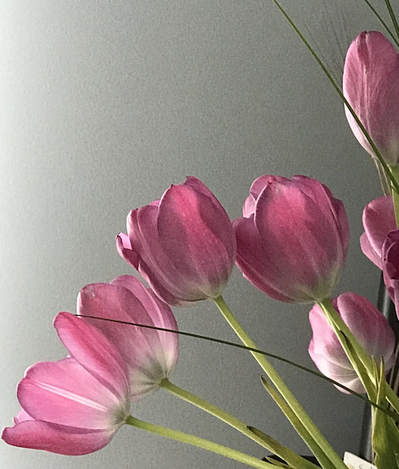|
On my blog I want to provide some tips and techniques for those of you who want to try painting, or are perhaps painters who would benefit from something I can share with you. So today, I want to tell you when black isn't actually black. There are many tubes of black paint at your local art store with names like Carbon Black, Ivory Black, Mars Black Chroma Black, Lamp Black, Bone Black and several more. As well, each of these blacks will be either warm or cool in their tone. So how do you know which one to choose for your painting? Well, my advice is don't choose any of them unless you absolutely need to. Let me explain... Black out of a tube will create a very flat (dead) place in your painting most of the time. It is not a vibrant hue, and will read differently than the other hues you use in your painting. Currently, I am working on an eagle. Most of us think of eagles as black because we see them flying above us - as a silhouette. In reality, they are a very dark brown interspersed with other beautiful tones and colors. To start the painting, I painted the outline of the eagle in black out of the tube. Here is the beginning of the painting...  As you can see, the outline is a flat black. But when I began to fill in the eagle's features, I needed to create my own black which would be much richer, more vibrant, and would read more three dimensionally than the black from the tube. So, I created my own black by combining various colors together. This next picture shows you the "black" which I mixed being painted over the flat black. What a difference between the two colors!  I hope you can see just how much darker and richer the created black is than the flat black of the tube paint. There are so many combinations you can use to create your own black. You can add more of one pigment than another to lean it toward a blue, or toward a red, a brown and so on. Have fun! Play with some of these combinations, or create your own. Make sure you record each combination you use in a notebook, and paint a bit of your homemade black beside the pigment names so that you see the differences, and can choose the best one for your current painting. One more thing that is important to realize, is that the black you use will be influenced by other colors in your painting. One black will look "off" while the next one will be "just right". So test the black you like best to make sure it works with the other colors you are using. Here are some color combinations I have used which work well for me: Ultramarine Blue + Burnt Sienna Ultramarine Blue + Burnt Umber a red + a yellow + a blue (try equal parts, then try more of one color than another to see what works for your black) Quinacridone Magenta + Viridian Green + Burnt Umber (go lightly on the Viridian Green - it's very powerful) Colors which are opposite on the color wheel can make a lovely black. So these are a few of the formulas I use for my blacks. Try out a few, and create many more with experimentation. Don't forget to create some kind of a color chart to record your pigment combinations and the amount you used of each or the ratio of the pigments to each other. Believe me, you probably won't remember that color you created and loved the next time you go to mix it. (Learn from my mistakes. :-) Let me know if you prefer the created black to tube black. Oh, and when you make that just-right-black, make sure you make a large enough amount to do your painting. Matching a created black can be a bit tricky!
1 Comment
Reluctance...for me, as an introvert, I experience this emotion on a regular basis, in
|
Joanne GiesbrechtArchives
December 2023
Categories |


 RSS Feed
RSS Feed